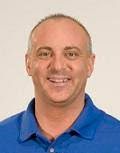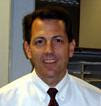 As the person who is fortunate enough to be head of the Y of Central Maryland, I spend a lot of time talking to people about the impact we have on communities across this great region. On the one hand, it’s an easy task, because the scope, scale and impact of what we do are so extraordinary. However, on the other hand, it’s that very scope, scale and impact that makes the telling of the story so challenging. Many wonderful organizations do one thing, and they do it to great effect, and in many ways that makes it easier to convey their story to others. At the Y, we have so many stories to tell.
As the person who is fortunate enough to be head of the Y of Central Maryland, I spend a lot of time talking to people about the impact we have on communities across this great region. On the one hand, it’s an easy task, because the scope, scale and impact of what we do are so extraordinary. However, on the other hand, it’s that very scope, scale and impact that makes the telling of the story so challenging. Many wonderful organizations do one thing, and they do it to great effect, and in many ways that makes it easier to convey their story to others. At the Y, we have so many stories to tell.So, what’s my favorite Y story to tell? Well, depending on the person I’m talking to, it might be a story about how our afterschool programs enrich kids’ minds and allow parents to know that their children are safe after the school day is over! Or, it could be about helping to keep seniors healthy and active in their retirement! Or, it could be about using chess to teach at-risk kids to use their minds and problem-solving skills to make a better life! Or, I could tell you a story about hardworking parents who rely on us to provide programs and facilities that allow them to build bonds with their children that last a lifetime! Or, the story could be about helping three year old kids get ready to be successful in school!...or, or, or…well, you get the picture.
It’s those stories that drive me to continuously expand our reach and to grow our footprint. Wherever I go, I see communities that need what we do; I see families that need more positive community assets (rather than shopping centers and video games) in their kids’ lives. I see pre-schoolers who need quality early childhood development opportunities to ensure that they are ready to learn when they get into kindergarten. I see the frightening and growing public health crisis of obesity and inactivity that is shortening lives, increasing the strain on our health care system, and lowering the quality of people’s lives. I know that the Y can do a great job in meeting these needs, and I know that being everywhere in Central Maryland all at once isn’t possible. But, that doesn’t make me feel better. In fact, it makes me even more restless.
Over the past four years, we’ve increased our capacity to serve families, youth and seniors by over 50%, whether you measure that by the number of memberships, the number of people we serve, or by any number of other measures. We’re working feverishly on both building new programs and on improving current programs, because there is no time to waste. That’s why we open new sites like our Parkville Family Center Y while we also keep pushing hard on all the complexities of redeveloping our existing Catonsville and Towson Family Center Ys.
People ask me all the time how we can juggle everything we’re doing, and I tell them it’s because he have to; because we are compelled to. That’s the special obligation the Y has in a community. We cannot be a “niche” organization. We need to make big and systemic impact at multiple levels - in individuals’ lives; in families’ lives; in the quality of life in neighborhoods. We work in the critical areas of fostering youth development, healthy living and social responsibility. That’s not a narrow mandate, but we aren’t a narrow organization. We have broad shoulders and we plan on continuing to grow for a very simple reason – because you need us to. And, we cannot do it without the community walking along side us all the way.
On this Thanksgiving holiday, I am thankful for my family, my health, the Y’s wonderful volunteers and staff, and for having the opportunity to serve this community through an organization as important as the Y.
Yours in Community,
John
Posted by John K. Hoey, President & CEO, Y of Central Maryland
























